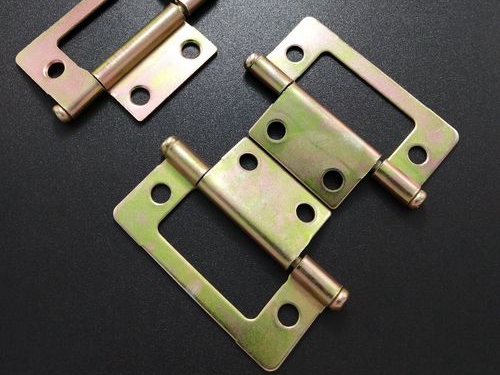Galvanizing: The Most Effective Way to Protect CNC Parts from Corrosion
Introduction
Galvanizing is a premier method for safeguarding CNC machined parts against corrosion, especially beneficial for components crafted from steel and iron. This process encompasses the application of a zinc coating either via hot-dip or electroplating techniques, ensuring a formidable barrier against environmental wear and tear. The addition of this layer significantly extends the durability and service life of parts subjected to harsh conditions.
Primarily used in sectors like industrial manufacturing, automotive production, construction, and maritime applications, galvanizing is perfect for protecting large structural components, automotive undercarriages, and outdoor machinery from the rigors of exposure and use.
In-Depth Look at Galvanizing: Durable and Aesthetic Metal Preservation
The Science Behind Galvanizing
Definition: Galvanizing involves depositing a protective zinc coating to steel or iron to prevent rusting. The most common method is hot-dip galvanizing, where parts are submerged in molten zinc.
Standards of Excellence:
ASTM A123/A123M: This specification covers the standard requirements for hot-dip galvanized zinc coatings on iron and steel products.
ISO 1461: This international standard specifies the requirements for finishes and coatings of hot-dip galvanized iron and steel articles.
ASTM B633: Provides the standards for electrodeposited zinc coatings on iron and steel.
Tactical Applications and Benefits
Aspect of Performance | Specific Metrics | Real-World Applications |
|---|---|---|
Corrosion Resistance | Up to 500 hours in salt spray tests (ASTM B117); Coating thickness typically 25–150 µm | Used for everything from automotive body parts to outdoor construction beams |
Durability | Coating life expectancy of over 20 years in typical environments; Provides cathodic protection | Essential for long-lasting highway barriers and utility poles |
Cost Efficiency | Reduces the need for costly repairs and replacements due to corrosion | Optimal for large-scale projects with long-term exposure risks |
Environmental Suitability | Zinc used in the process is completely recyclable and non-toxic, aligning with sustainable practices | Ideal for projects prioritizing eco-friendly materials |
Types of Galvanizing Techniques
Comparative Overview of Galvanizing Methods
Method of Galvanizing | Core Characteristics | Advantages | Considerations |
|---|---|---|---|
Hot-Dip Galvanizing | Immersion in molten zinc at about 450°C; Coating thickness between 70–150 µm | Provides a robust, thick zinc coating ideal for structural components | Size of the dip tank can limit the size of parts that can be treated |
Electro-Galvanizing | Zinc applied through an electric current; Coating thickness between 5–25 µm | Offers a more controlled coating with a smoother finish | Less durable than hot-dip; better suited for aesthetic or interior applications |
Mechanical Galvanizing | Zinc coating applied via tumbling with glass beads and zinc powder; Thickness from 20–70 µm | Effective for small parts like fasteners, ensuring even coverage | Coating uniformity may vary; not suitable for structural components |
Thermal Spraying | Zinc is sprayed onto the part in molten form; Coating thickness can be up to 200 µm | Allows for on-site application and repair, very thick coatings possible | Requires specialized equipment and skilled operators |
Strategic Selection and Optimization Tactics
Hot-Dip Galvanizing
Ideal Use: Large structural components requiring maximum protection.
Strategy for Optimization: Ensure thorough pre-cleaning, maintain precise temperature control, and implement a controlled withdrawal rate to minimize drips and uneven coating.
Electro-Galvanizing
Ideal Use: Smaller, precise components needing a good aesthetic finish with moderate corrosion protection.
Strategy for Optimization: Focus on uniform current distribution and utilize a multi-layer nickel-zinc system for enhanced durability.
Mechanical Galvanizing
Ideal Use: High-volume small parts, such as screws and bolts.
Strategy for Optimization: Optimize the ratio of parts to media and adjust the tumbling duration to achieve consistent results across all pieces.
Thermal Spraying
Ideal Use: Repair work and parts too large for dip galvanizing.
Strategy for Optimization: Prepare the surface meticulously to enhance adhesion and select the appropriate spraying parameters for coverage.
Compatibility Chart for Material and Galvanizing Type
Material | Recommended Galvanizing Method | Benefits | Verified Outcomes |
|---|---|---|---|
Hot-Dip Galvanizing | Maximum durability and protection | Proven to last over 50 years in marine environments | |
Electro-Galvanizing | Enhanced surface finish, moderate corrosion resistance | Successfully tested in automotive parts for 200+ hours salt spray | |
Mechanical Galvanizing | Ensures protective coverage without compromising mechanical properties | Reliable in construction settings with zero failure reports | |
Thermal Spraying | Provides a corrosion-resistant layer suitable for harsh conditions | Effective in maintaining integrity under high-pressure conditions | |
Thermal Spraying | Adds surface robustness for high-stress applications | Used in aerospace fixtures with positive durability feedback |
Comprehensive Process Control and Quality Assurance
Preparation and Quality Standards
Pre-Treatment: Components undergo degreasing, pickling, and fluxing to prepare the surface.
Process Control: Precise temperature monitoring and time management ensure consistent coating quality.
Post-Treatment: Cooling and passivation processes enhance the coating's protective properties.
Expert Insights and Common Inquiries
How does galvanizing impact the longevity of CNC parts?
Can galvanized surfaces be painted or powder-coated?
What environmental considerations are there with galvanizing processes?
How does galvanizing influence the mechanical properties of metals?
What are the cost implications of selecting one galvanizing method over another?

